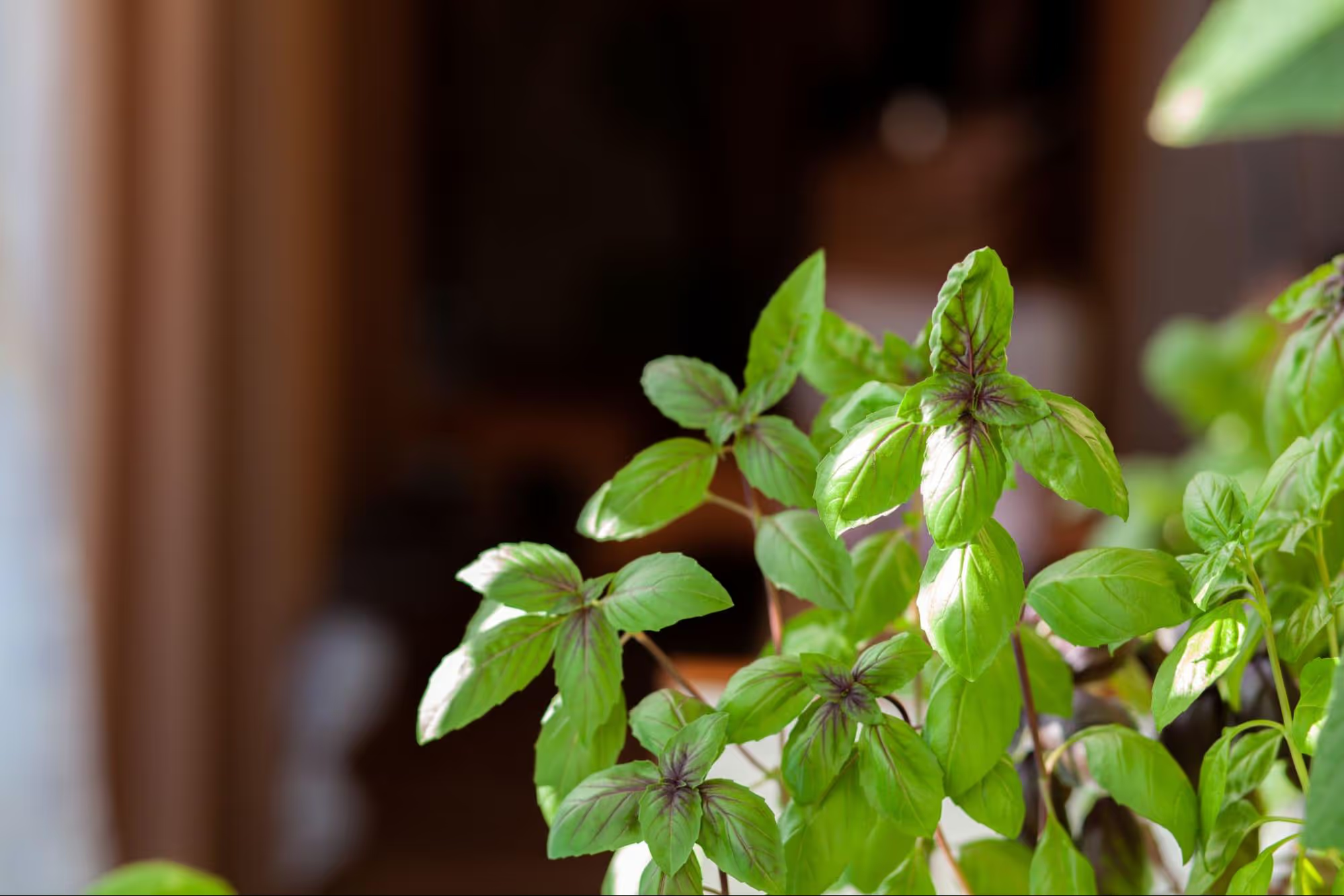
Basil, one of the most popular herbs in the world, is recognized for its distinctive aromatic fragrance, intensely green, smooth leaves, and rich, spicy flavor. This herb is not only irreplaceable in cooking but also in the health industry due to its numerous nutritional benefits. To achieve maximum usability and premium quality, it is crucial to monitor the plant's size, including both height and leaf size, as these factors directly affect its yield, nutritional value, and aroma intensity, which is a key element of basil's flavor.
Basil leaves are the primary part of the plant used in cooking and industry, so their size and health are of utmost importance. When the leaves are too small, the plant is not fully developed, and its aroma and flavor will not be as intense. On the other hand, leaves that are too large may indicate that the plant is too mature, which could affect the flavor and aroma quality.
Ideally, basil leaves should be medium-sized, with a rich, deep green color, indicating that both the plant and the leaves are in optimal condition. When the plant is ready for use, the leaves should be fully developed enough to release a rich fragrance, but not so large that they become tough or bitter. The leaves should be fleshy, juicy, and elastic, with a smooth surface.
The height of basil also plays a significant role in the plant's quality. The ideal height for harvest depends on the basil variety, but plants should generally reach a height between 20 and 30 cm before they are ready for harvest. At this stage, the plant is developed enough to yield a substantial amount of leaves, but it has not grown too tall, which could dilute its flavor.
Tall plants that exceed 30 cm start to focus on flowering, which can result in a decrease in leaf quality and aroma. At this stage, the plant may become coarser, and the leaves may lose their juiciness, which means harvesting should be done before the plant enters this phase. For optimal yield and quality, harvesting should take place while the plants are still in their active growth stage, before they begin flowering. If the plants are regularly pruned, they will continue to grow and produce new, younger, and juicier leaves.
The quality of the plant, including leaf size, directly affects its yield. The larger and healthier the leaves, the more productive the plant will be. However, this does not mean that a plant with an excessive number of large leaves is necessarily better; in some cases, overgrowth can reduce the overall quality of the plant. It is recommended to regularly prune the plant to encourage the growth of new shoots. This process not only improves leaf quality but also stimulates better branching, leading to more leaves and, consequently, a higher yield.
Basil is typically harvested when it reaches a height of 20-30 cm and the leaves have a rich green color. The first cuts should be made when the plant starts to form leaves that are sufficiently developed, and while the plant is in the active growth phase. It is best to harvest the youngest leaves at the top of the plant, as they contain the most essential oils and have the most intense aroma.
Basil harvested while young and in the active growth phase generally has a milder but richer flavor. Later yields may be more bitter, especially if the plant begins to flower, signaling that it is entering the maturation phase, where its focus shifts from leaf growth to reproduction.
The ideal size of basil for use depends on many factors, including the height of the plant, leaf size, growth stage, and the conditions in which the plant is grown. The ideal leaf size, which includes fleshy, juicy, and elastic medium-sized leaves, directly affects the intensity of the aroma, flavor richness, and nutritional value. Plant height also plays a crucial role in quality, as excessive height may signal the onset of flowering, which reduces leaf quality. Regular watering, feeding, pruning, proper lighting, and temperature control contribute to the plant's growth and maintenance of optimal conditions for its development. With proper care, basil will provide a rich fragrance and intense flavor, making it the perfect herb for all culinary and health-related needs.